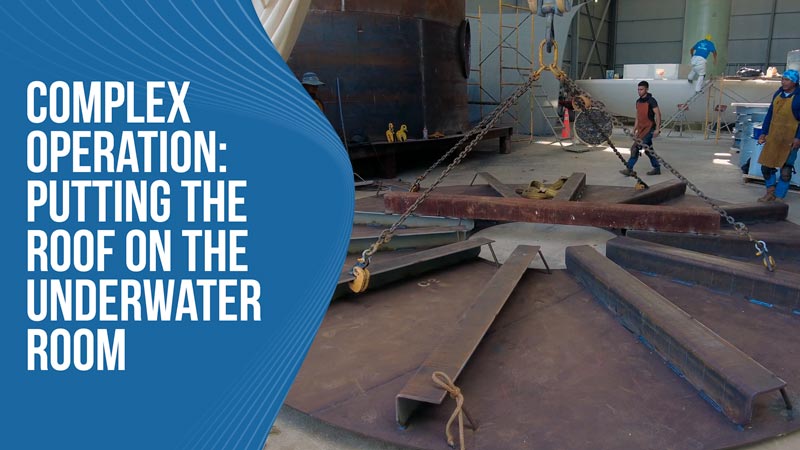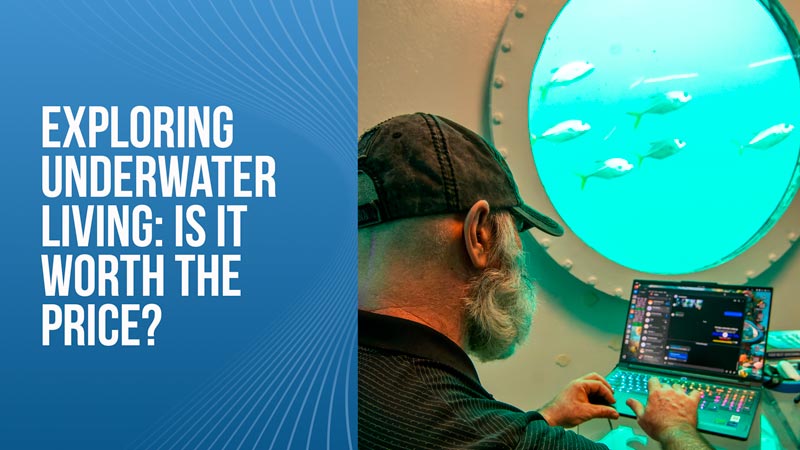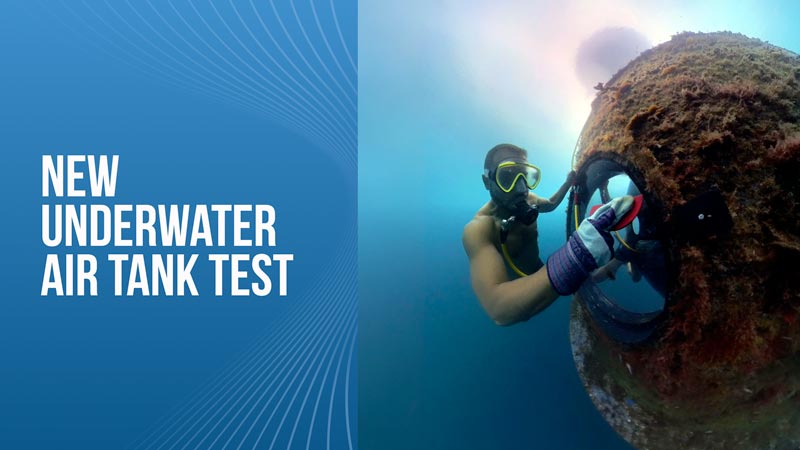
As we continue to make progress on the underwater room, we’ve come to a huge step in the process – putting the roof on! This isn’t necessarily a difficult process but it is definitely tedious and we have to go through many steps to make it happen. The fact that we are doing this for the first time also means that we have lots to learn along the way.
This isn’t the first big flip that we’ve done inside the factory, the first “Flippening” happened last year and while that piece was much larger, more flexible, and lighter, we learned quite a bit that we could apply when flipping this big piece of steel.
Much like the Flagship roof, we built this piece upside down on the ground to apply the support beams. This means that we have to flip it, which isn’t easy with as big and heavy as it is. Another challenge we ran into was that the steel was flexing a little bit so we had to weld a few extra braces onto it while we made the flip.
Slowly and steadily, we lifted the roof up until it was floating and then we turned things around and used a little bit of manpower to get it swung in the right direction so that we could lower it down. Once we had it on the ground, the battle was only half finished since we still had to get it lifted on top of the underwater room and welded in place.
Again, when lifting the roof by the four contact points that we welded on, we had some flexing and warping that didn’t let us get things lined up correctly. We brought it back down to the floor and added some extra braces and lifted it up again and then lowered it into place. This worked perfectly and everything slid nicely into place.
We had a little bit of prep work to do to get everything ready to be fully sealed up and then when we were ready, we lowered the roof the rest of the way and welded the entire structure together to officially close the lid on the underwater room!
***One extra note – the flexing of the roof while being suspended by the crane does not affect the structural integrity of the piece. We built the roof to withstand more than enough water pressure and the structural strength needed for that is simply different from the weight of lifting it. Once everything is welded in place, it is completely secure and won’t budge, buckle, or warp.



